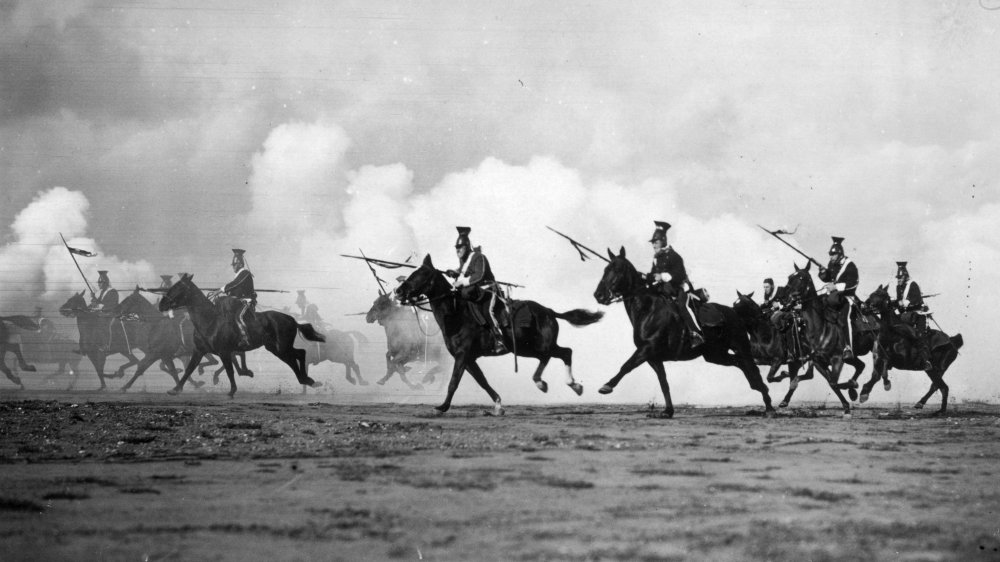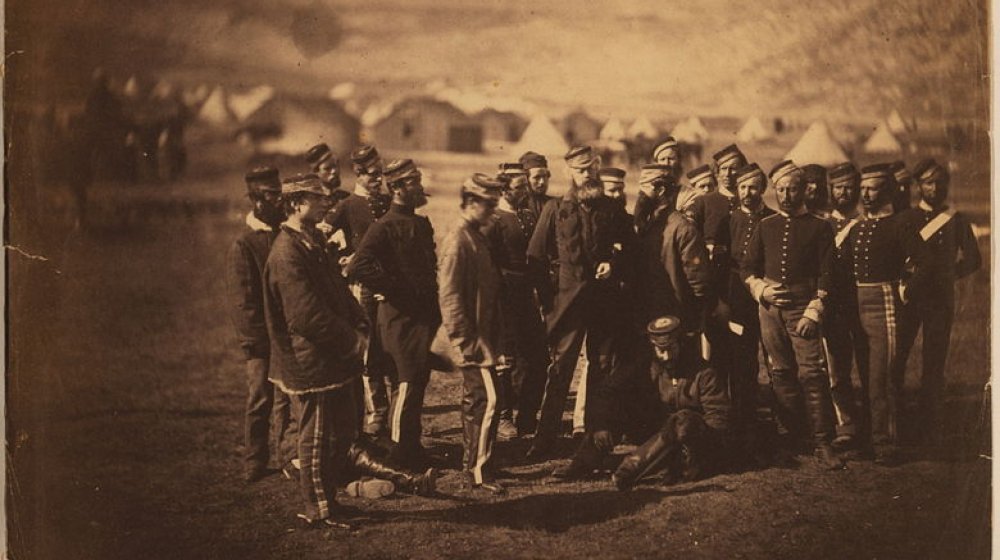The Tragic True Story Of The Charge Of The Light Brigade
There's an epic poem about the Charge of the Light Brigade by Alfred, Lord Tennyson, England's Poet Laureate. It's pretty thrilling, with lines like:
Theirs not to make reply / Theirs not to reason why / Theirs but to do & die / Into the valley of Death / Rode the six hundred.
There's also a film, back in 1936, starring Errol Flynn. (Also a silent film in 1928.) The actual charge, however, like a lot of things military that get all shiny when translated into art, was a "suicidal" disaster that shouldn't have happened.
The setting was the Crimean War, which set British troops and their allies against Russians, supposedly in defense of the failing Ottoman Empire, which in turn was threatened by Russian military advances on the Crimean Peninsula, not unlike what Vladimir Putin has been doing there recently.
The year was 1854, and cavalry was still very much a thing in warfare. As were cannons. The Light Brigade was a cavalry unit of very good horsemen mounted on very fast horses. No armor, no protection, and soldiers armed with cutty things like lances and sabers. Maybe they were thinking, "If we move fast enough, they won't be able to shoot us, so why bother?"
Survivors of the Light Brigade
Except they couldn't outrun cannonballs and rifle fire.
By all accounts, the charge itself was a disaster. Someone spotted what they thought was an effort by the Russians to move artillery they had recently captured from the British and friends. The order was given: The cavalry, both Light and Heavy Brigades, plus infantry, would assault the ridges and recover the heavy guns. The cavalry commander dithered, waiting for the infantry to show up. The infantry didn't. Orders were given to "advance rapidly to the front." But no one defined which "front" was the target for the assault. The officer delivering the order was asked to clarify, and he vaguely waved toward what Alfred would call "the Valley of Death." Which wasn't where he should have waved.
Orders being orders, and soldiers being soldiers, the order was given to the Light Brigade to charge through the North Valley, a distance of a mile and a quarter across open country, which featured enemy firing positions on three sides, though not all three fired on the cavalrymen at the same time. Not that that made much difference; of the 670 men who rode in, 140 died and 110 were wounded. And let's not forget the horses: nearly 400 mounts died that day.
They reached the guns but couldn't hold the position. Then they had to ride back — you know, through the Valley of Death.
There's no question that the British soldiers acted with extreme courage in the face of incompetent leadership. And in a note of irony (or justice, depending on your perspective), the first to fall was the message bearer who'd waved his arm in the wrong direction. The Russians must not have gotten the memo about "not shooting the messenger."

